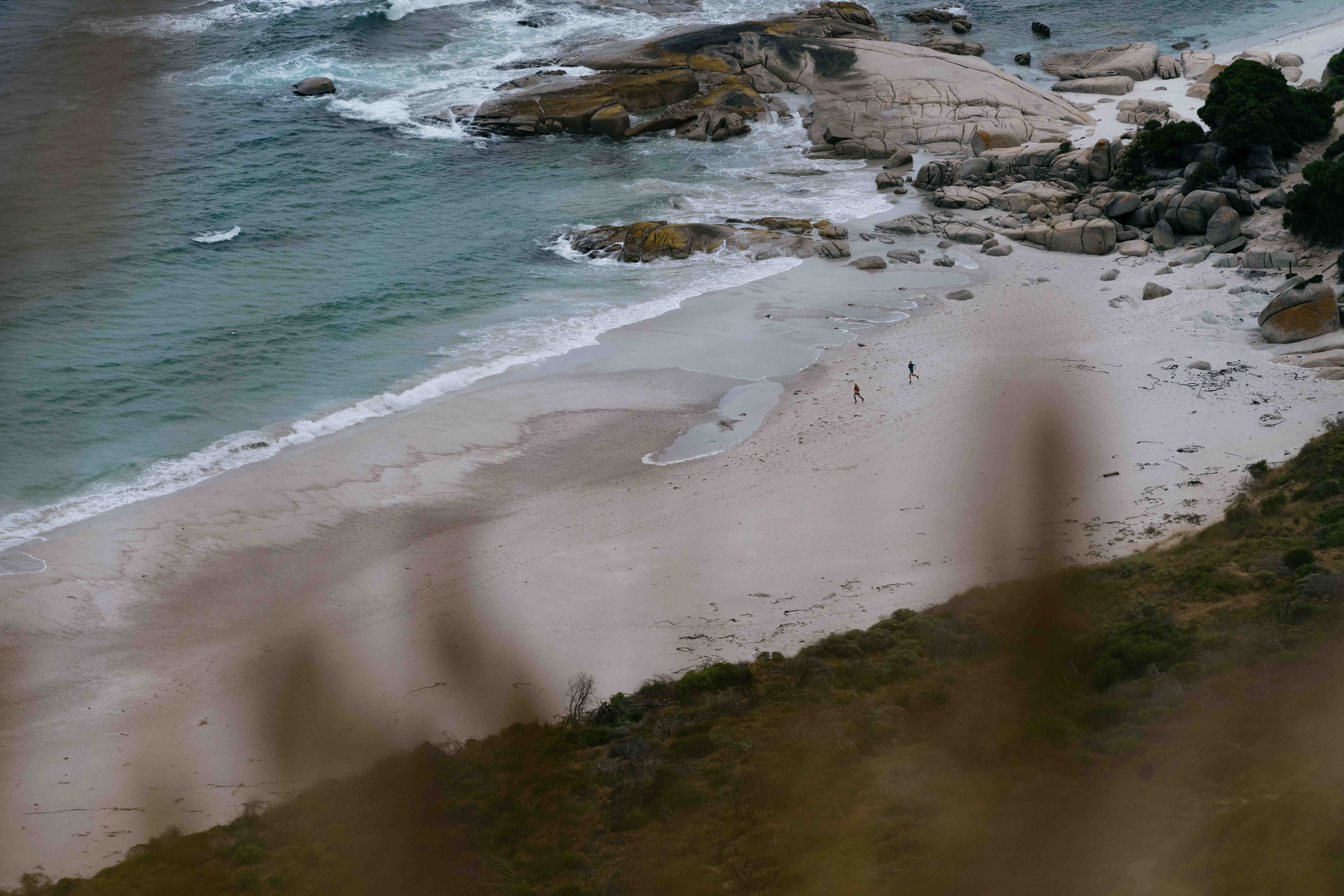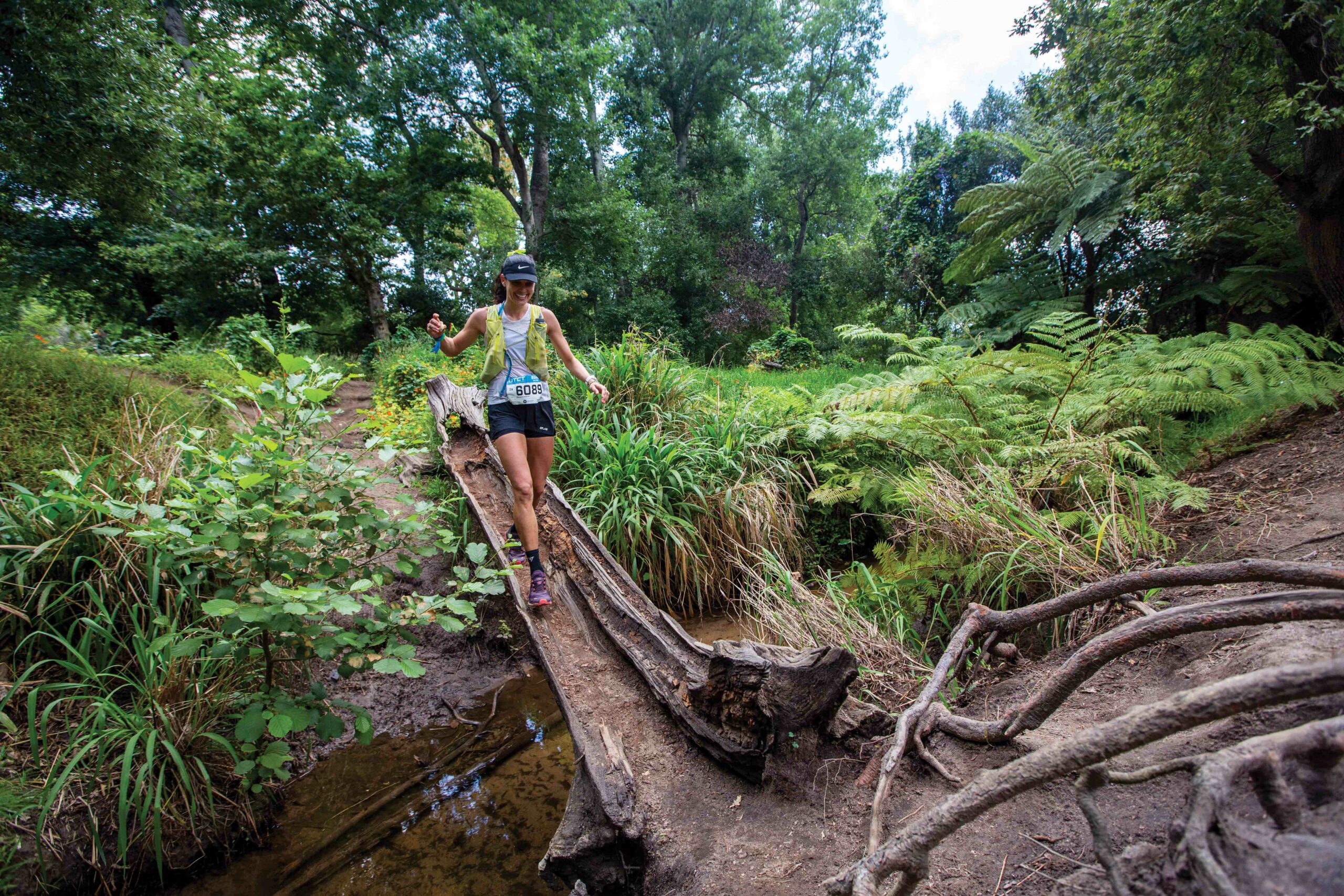Ace the Ultra-Trail Cape Town Route
An Expert Guide to the Routes and Terrain of the RMB UTCT 2022
Having finished the 100-mile (160km) Ultra-Trail Mont Blanc in 2015 and the RMB UTCT 100km in 2019, experienced endurance trail runner and Runner’s World Creative Director Alana Munnik knows the UTCT better than most. Not only does she train along many of the routes; she’s also been involved in most of the recce runs held in the build-up to this year’s race, as she prepares to take on the inaugural 100-miler.
Here’s her advice on tackling the route…
Easy Does It Signal Hill (100-miler, 100km)
This may be early on in the race, but the way you run the Signal Hill loop could decide how the rest of your day is going to go. Because it’s a relatively flattish and runnable section, the temptation is to get caught up in the excitement of the start and go out too hard. “The first 20km takes in around 1 000m of climbing; but because of the nature of the course, you don’t realise how much you’re working at that point,” says Munnik. The key to handling this section is to hold back as much as you can.
The Belly Of The Beast Table Mountain (100-miler, 100km, 35km)
This is the Belly of The Beast, and how you handle the Table Mountain section can make or break your race. The climb up Kloofnek Corner is spectacular – spectators line this section of the route, cheering loudly and ringing cowbells. It’s easy to get pushed along by the adrenalin and the vibe. Runners then traverse the contour path until they reach the climb up Platteklip, which is often shrouded in early-morning mist. You will soon begin to hear the sound of the lone bagpiper, mysterious-looking in the pale light, and it’s easy for your emotions to spill over as you climb to the summit of Cape Town’s famous landmark. But by the time you get to the top of Platteklip, you’ll be 25km in, and already have 1 800m of climbing behind you.
In The Clouds Top of Table Mountain (100-miler, 100km, 35km)
Running along the top of Table Mountain as you make your way towards Maclear’s Beacon is a relief, after all the climbing. This section isn’t overly technical, and it’s very runnable, but be careful on the slippery (and often a little tatty) boardwalks, which could cause a nasty fall or trip. As you continue to Echo Valley and to the Valley of the Gods, on the Atlantic side of the mountain, expect undulating terrain with some technical sections. After this, runners will head out on a different route from what they did in 2021 (when the route went left, towards Constantia Nek). This time, you’ll head right, and towards the steep, technical and narrow path down Llandudno Ravine towards Suikerbossie. Be cautious here, as a fall could spell disaster.
Beach Party Llandudno and Hout Bay (100-miler, 100km, 55km)
You and your fellow runners will then head down from Suikerbossie towards the famous Llandudno Lifesaving Club, and a critical water point. Then it’s on to the rocky coastal trails, with some boulders to negotiate, across Sandy Bay, before the climb up Suther Peak (also known as ‘Suffer Peak’ to local trailies). Your hard work is followed by the descent to the bustling waterpoint in Hout Bay, 60km into the race. Hout Bay is a major pit stop for those doing the 100-miler and 100km events. It’s critical that you get in some solid nutrition and hydration for the journey ahead.

Hike A Walk Blackburn Ravine (100-miler, 100km)
Once refuelled, runners will start the climb up Chapman’s Peak. Initially the route follows the Chapman’s Peak Road; but at 1.5km up the famous climb, your route heads up at East Fort and then towards Blackburn Ravine. This is a quad burner; a long, steady climb with technical rocky sections that most will hike. For the 100-milers, this may be the place to watch the sun rise, as the stunning 360-degree panorama means both oceans are visible from the vantage point above Chapmans. And it you’re a 100-miler, your route now takes a dog-leg to the south.
Kalkies Bound Blackburn Ravine to Kalk Bay (100-miler)
From the top of Blackburn Ravine, the 100-mile route drops into Silvermine, and continues east along very runnable jeep track before the descent into Kalk Bay. There are some technical sections as you near Kalkies, so caution is advised. Runners will eventually pop out at the famous Olympia Café and on to the Kalk Bay aid station, at 74km in.
The Crossing Kalk Bay to Kommetjie (100-miler)
From Kalkies, you’ll make your way across Fish Hoek Beach and up the steady climb of Elsies Peak. From there, your route heads towards Sun Valley, along soft, sandy, energy-sapping trails. The route around Black Hill and Red Hill will seem remote, but various roads still need to be crossed. Eventually your route drops down again, down the historic Old Mule Track to Simonstown and the next aid station. Then it’s up again along the Signal Foot Path – a classic old stone staircase – towards the Red Hill section and on to the Hoerikwaggo Trail, which takes you along jeep roads and flowing singletrack towards Slangkop and Kommetjie.By this stage, tired legs may struggle to find that flow. Luckily, the route drops down switchbacks and into Kommetjie and another aid station, at 115km.
Coastal Glory Noordhoek to Chapmans Peak (100-miler)
Once through Kommetjie, runners will make their way along spectacular Noordhoek Beach, famous for its horse riding. For the 100-milers, excitement will be building, as you’re now on the ‘return’ journey. But don’t speak to soon: the climb back up Chappies from Noordhoek at 125km is technical and slippery. Patience will be a virtue here, as you head towards Constantiaberg along rolling, rocky terrain. Bear in mind the Noordhoek aid station will be the last until the Constantia Glen station 18km later; it’s critical to fuel up properly here, and ensure you have enough supplies for the distance.
Getting technical Blackburn Ravine along Vlakkenberg to Constantia Nek (100 miler, 100km, 55km)
Arguably one of the most technical parts of the trail. Lots of ups and downs, and the vert skyrockets as you head to Constantia Nek. It’s a tough section, on tired legs. Vlakkenberg follows; again it’s a technical and rocky section, not the easiest to run.
Forest Magic Constantia Nek, Alphen Trail and Rhodes Memorial (100-miler, 100km, 55km)
Once you’ve made it to Constantia Glen, the route heads down towards the lush forest of the Alphen Greenbelt Trail. This section would be easily runnable, if tired legs weren’t a factor; but there’ll be solid crowd support along the trail to help you along your way. For the 100km and 100-mile runners there’s a sense of relief, as the isolation of the preceding few hours up on the remote mountain sections gives way to comforting civilisation. Once through the Greenbelt, the route makes its way through the famous Kirstenbosch contour – complete with its ‘400 stairs’ section – into the Newlands picnic site and Plum Pudding Hill, towards the vibe of the Rhodes Memorial waterpoint. But remember that there’s still work to be done, so resist the temptation to ‘smell the stables’ and push too soon.

The Sting UCT and Finish (100-miler, 100km, 55km, 35km, 23km)
The final sting in the tail makes itself known as you leave Rhodes Mem and wend your way towards the King’s Blockhouse. This is a tough climb on a normal day; on tired legs, it’s brutal. Slippery, steep, technical, and un-runnable for most. The key is to keep moving… no matter how slowly. Because once at the Blockhouse, you have only 8km to go, with the climbing mostly done. From the Blockhouse it’s down to Tafelberg Road and the slippery descent at Dead Man’s Tree. Stay vigilant: the profile looks easy, but the route is still littered with loose shale, rocks and technical singletrack, before you finally drop down to the finish in Vredehoek.
Race Day & Before: Tips & Tricks
Experienced trail runner Alana Munnik, who finished the 100km UTCT in 2021, shares her top tips:
- In training, run with your full pack.
- Rotate your trail shoes during training as well as on the day.
- Take spare batteries for your head torch; and
- Take a spare head torch.
- Plan to change shoes and socks 2 or 3 times on race day.
- Eat whole food when you see your crews; but
- Always have emergency supplies in your pack.
- Download the maps to your smart watch, and know how to use them.
- Ensure you have the emergency contact numbers with you, and that your phone is fully charged.
- I ate pizza in Hout Bay!
- Keep applying sunscreen.
- If it’s a hot day, cool yourself down with ice water.
- Fingerless gloves will help you on the clambering sections.
- To pole or not to pole? It’s not easy using poles at UTCT, as the trail is loose, narrow and shale-y. But if you want to, only do so if you’ve trained with them
READ MORE ON: ultra-trail cape town

